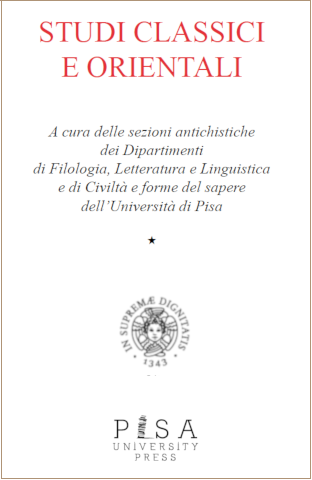LE TERMOPILI COME ‘LUOGO IDEOLOGICO’ NELLA PROPAGANDA ROMANA*
Abstract
The Thermopylae in the Roman propagandaIn a passage of his Origines (Aulus Gellius, Noctes Atticae, III, 7, 1.19 = fr. 83 PETER; IV, 7 JORDAN; IV 7a CHASSIGNET), Cato compares an episode of the first Punic war to the celebrated episode of Thermopylae during the PersianWars: as Leonidas sacrificed himself and his army to save the Greeks, so Q. Caedicius did, in order to allow the Roman soldiers to escape the Punic army. The analysis of other literary traditions shows that the comparison between the Greek and the
Roman episode is not a Cato’s original creation, but it represents a particular aspect of the Roman anti-Carthaginian propaganda of the first half of the 3rd century BC. As modern scholarship has already suggested, Thermopylae pass was a central place in the Greek imagination, since it represented the ideological boundary line between
Greek and Barbarian (i.e. Persian) world. The comparison between Q. Caedicius’ episode and Leonidas’ death, as well as the connection between Apennines and Thermopylae in a passage of Livy suggest the
Roman reception of ethnic and ideological values of the Thermopylae ‘myth’: in different historical moments,Apennines and Sicily became an ideological border between Roman and non-Roman world, as the Thermopylae pass was between Greeks and Persians.
Fascicolo
Sezione
Articoli


